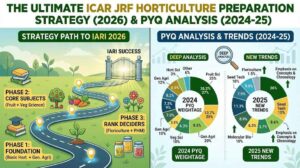
Fundamentals of agronomy Part 4 🔰 Introduction— Essential Plant Nutrients PPT
Understanding the essential plant nutrients is one of the most crucial parts of agronomy. Whether you’re a B.Sc. Agriculture student starting your semester or preparing for competitive exams like NABARD, AFO, FCI, or JRF — this topic lays the foundation for crop nutrition and plant health.
In this Essential Plant Nutrients PPT part, we will systematically explore the basic concepts of essential nutrients, their classification, functions, absorption mechanisms, and the role of fertilizers and manures. The content is prepared as per the 6th Dean Committee Syllabus, enriched with visual PPT slides, in-depth explanations, infographics, and PYQs (Previous Year Questions) from real agriculture exams.
Our goal is to make learning visual, engaging, and 100% exam-relevant — so you don’t just memorize but understand and apply the concepts confidently.
Topics cover
Essential Nutrients
Definition, Criteria of Essentiality, Functional Elements
Classification: Macro & Micro Nutrients
Role of Nutrients in Plant Growth
Nutrient Absorption
Active & Passive Absorption
Forms of Nutrients Absorbed
Manures and Fertilizers
Inorganic, Organic, Bio-fertilizers (Classification & Characteristics)
Nutrient Use Efficiency
Method of Preparation & Role in Crop Production
What is essential plant nutrients
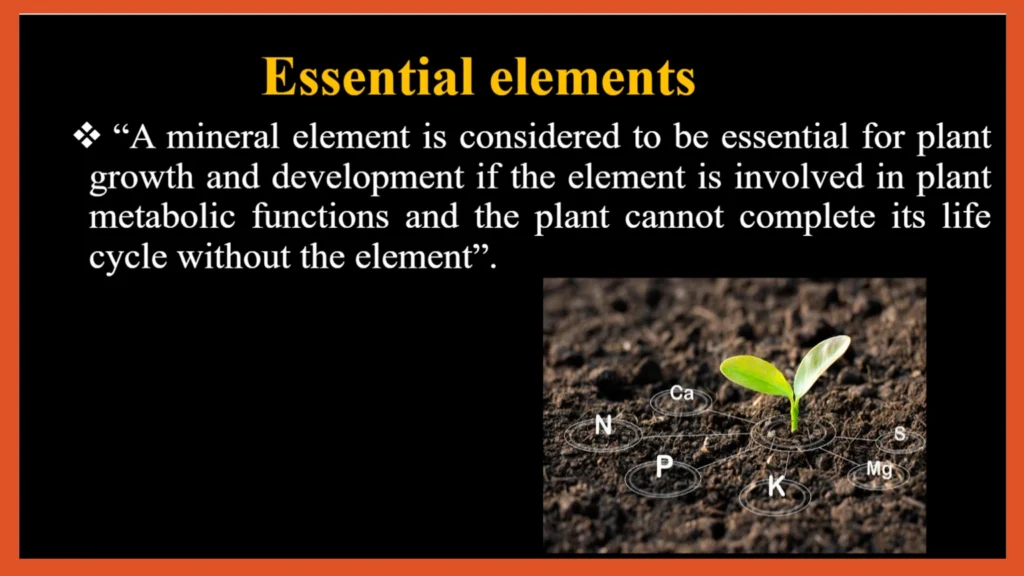

Classification of essential plant nutrients
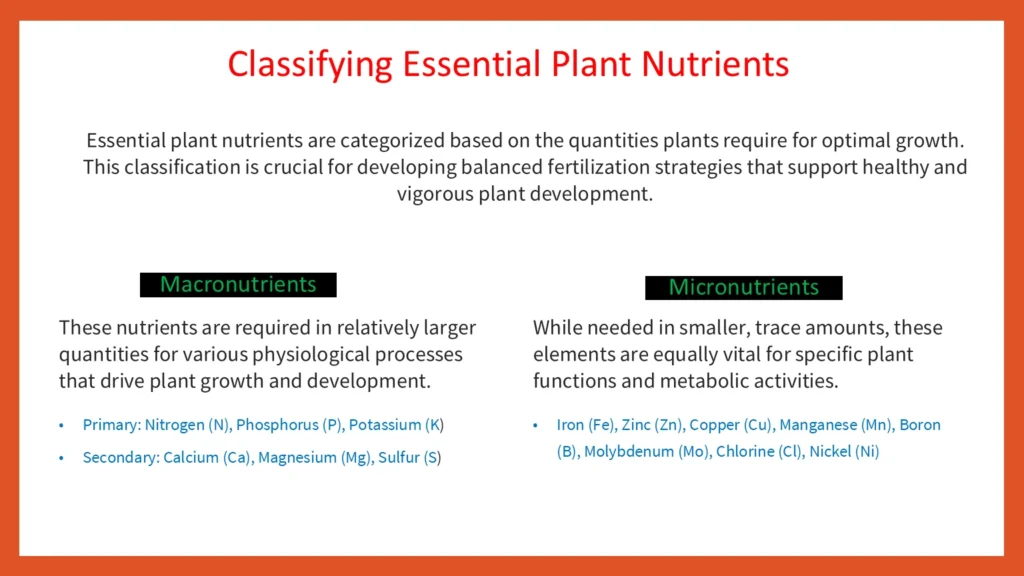
17 essential plant nutrients and their functions ppt
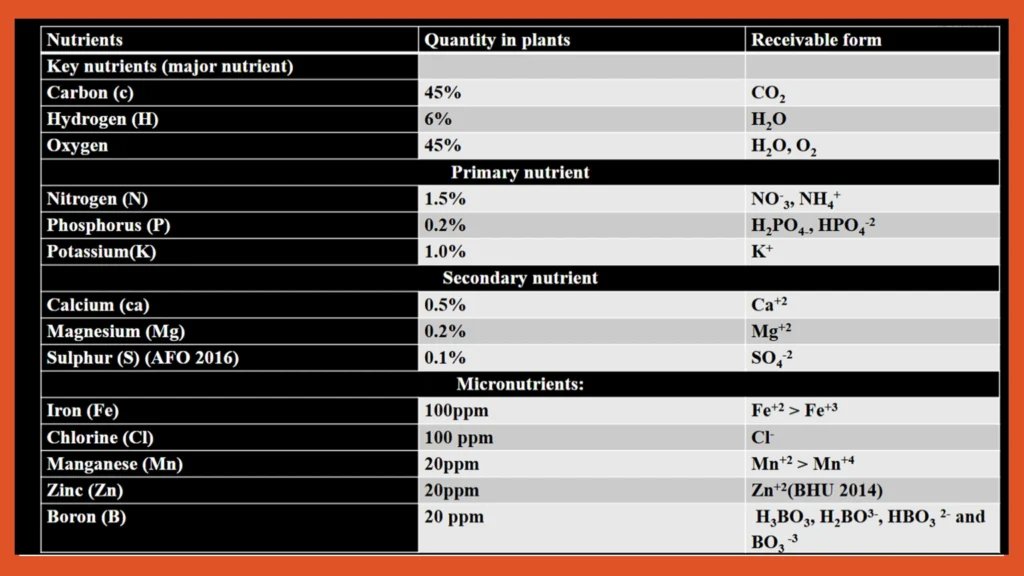
Important function of essential plant nutrients
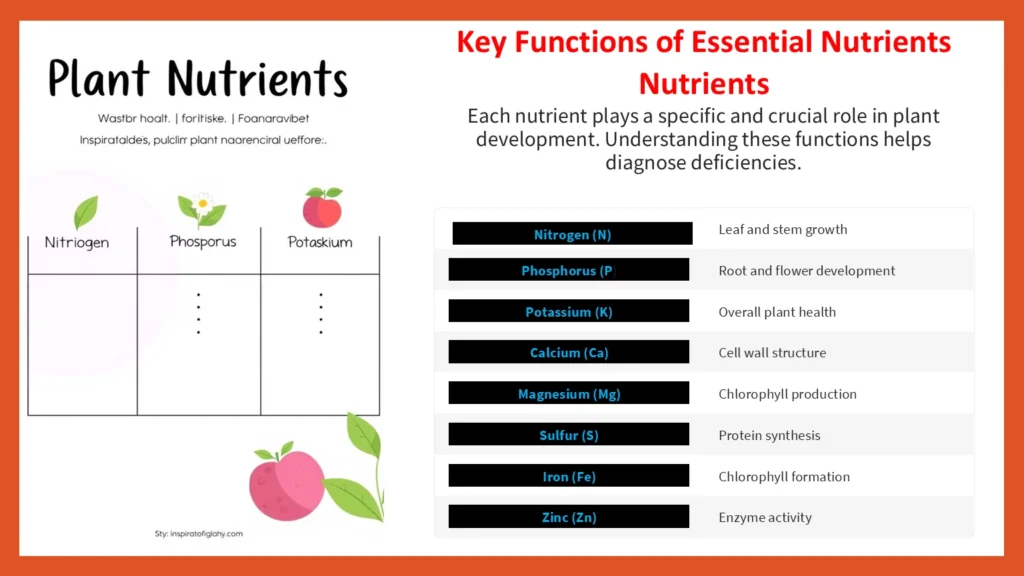
Diverse source of essential plant nutrients
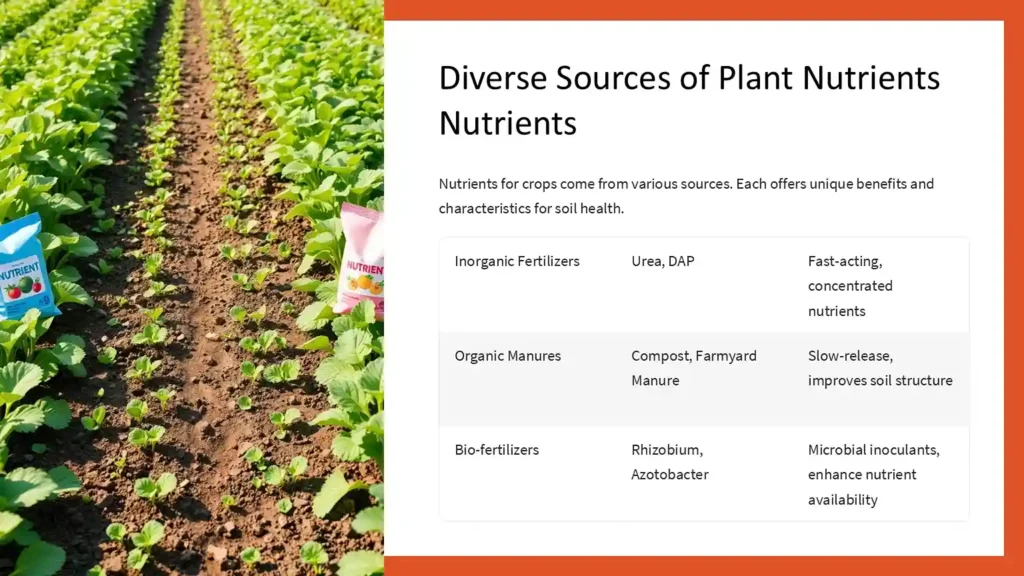
how plant nutrients uptake mechanism work

nutrient uptake mechanism in plants ppt
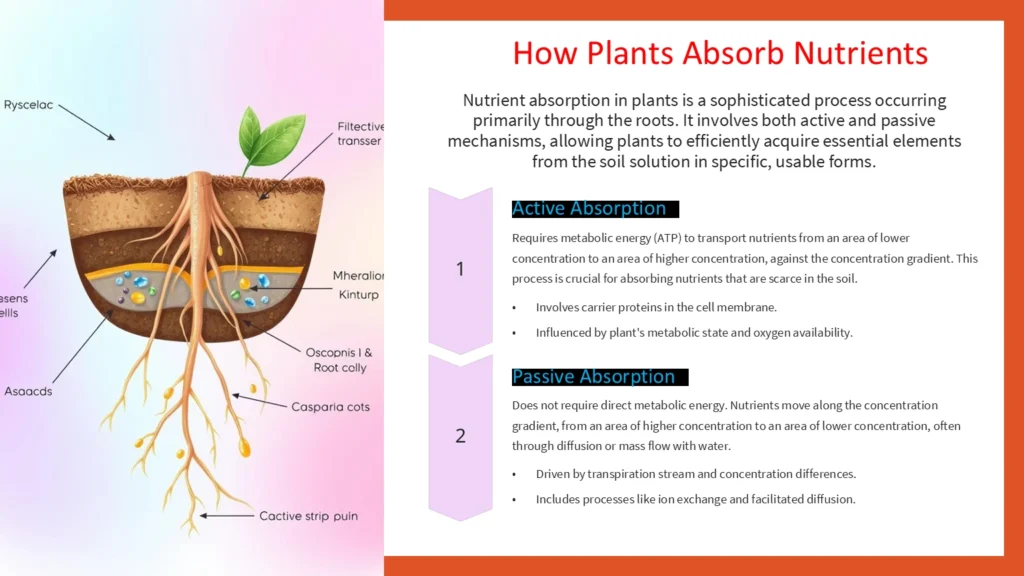
explain the role of macronutrients found in plants

role of secondry plant nutrient
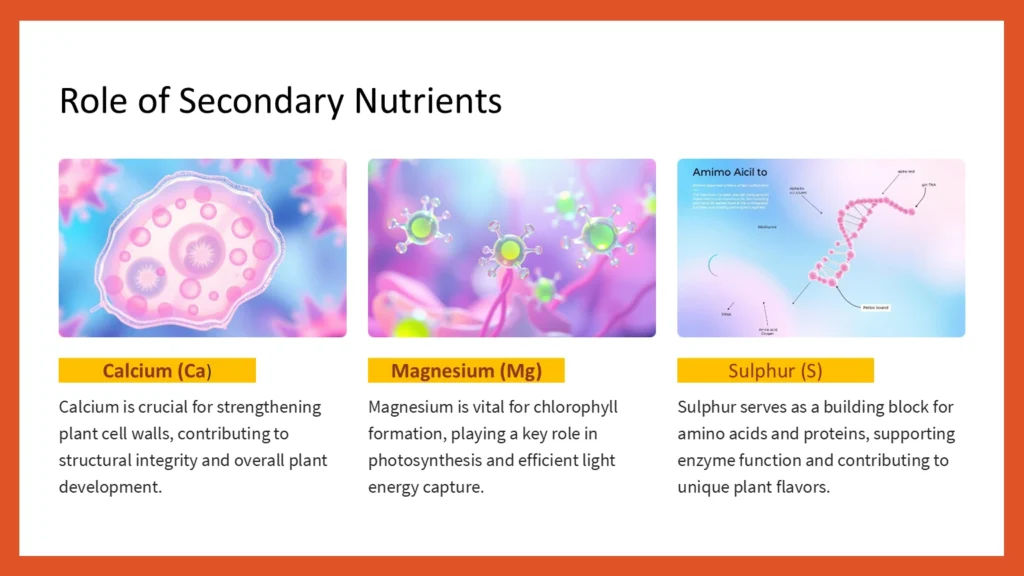
role of micronutrients in plants
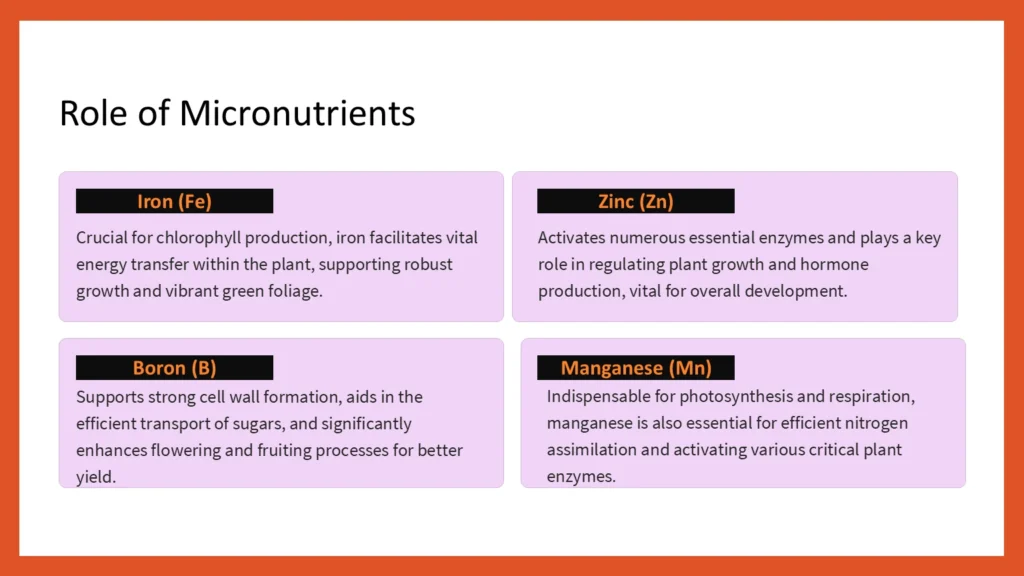
what is biofertilizer with example
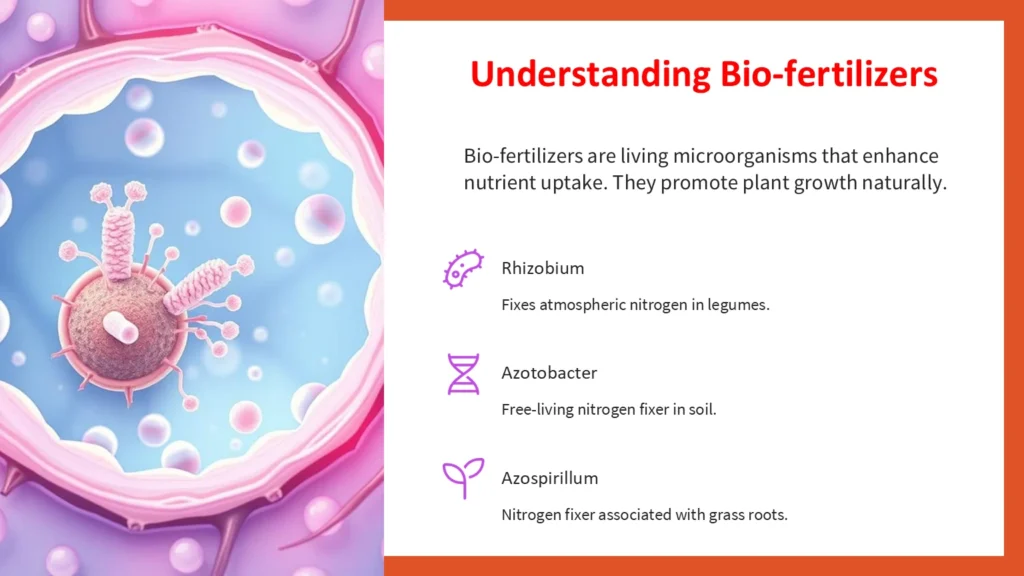
nitrogen fixing bacteria as biofertilizer

rhizobium species for different crops
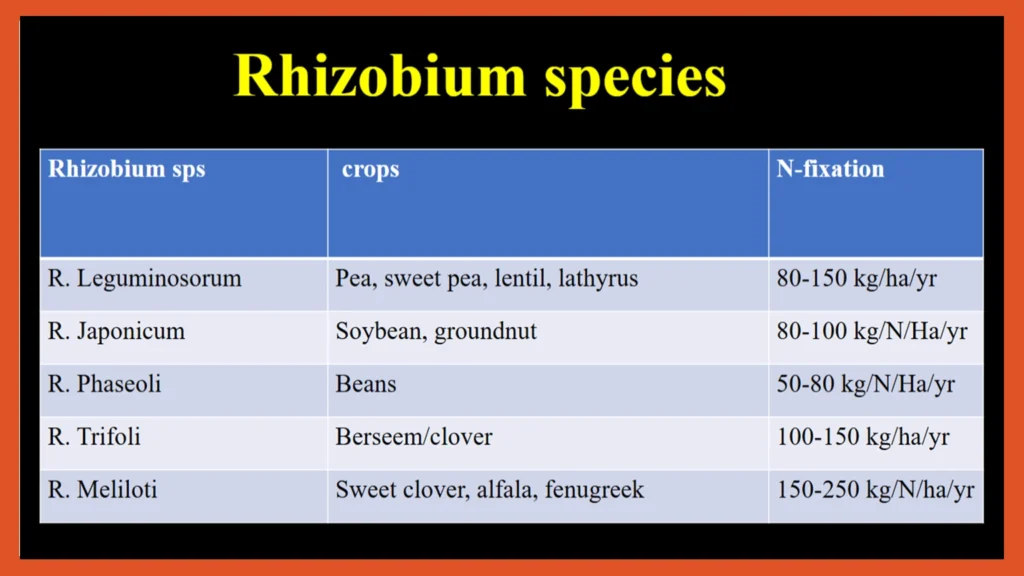
Non symbiotic nitrogen fixing bacteria
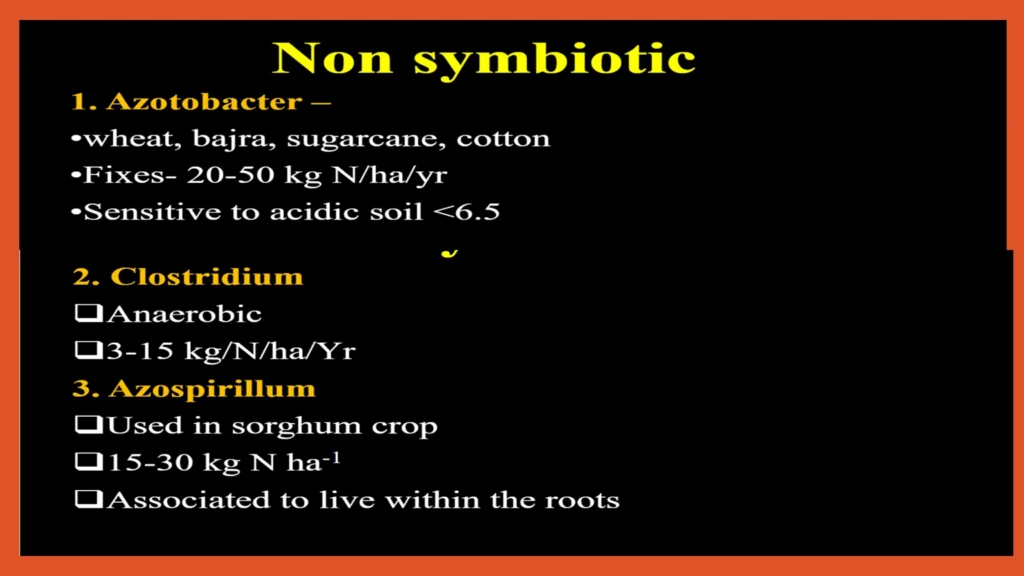
what is three criteria of essentiality of plant nutrients
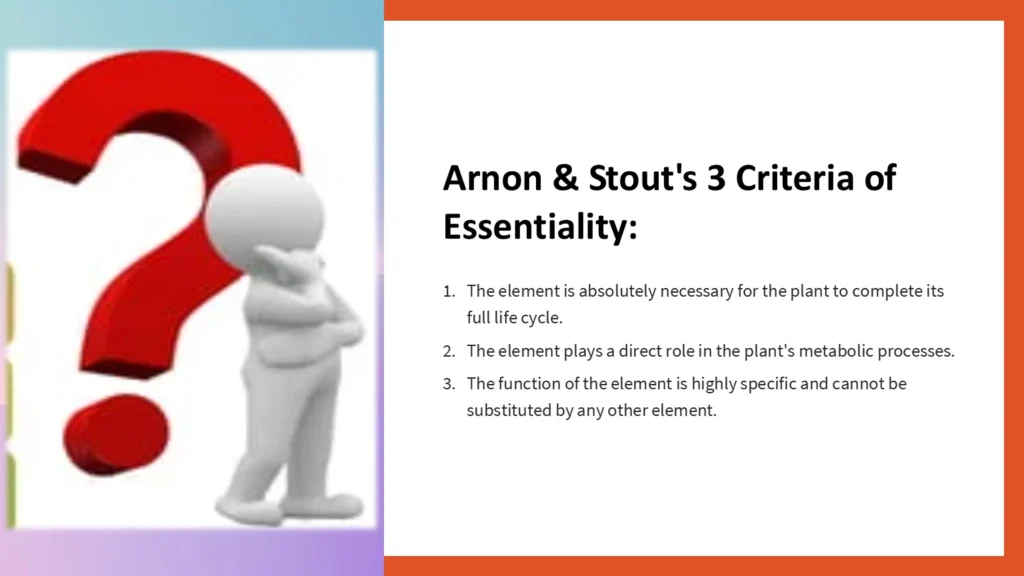
nutrient use efficiency ppt
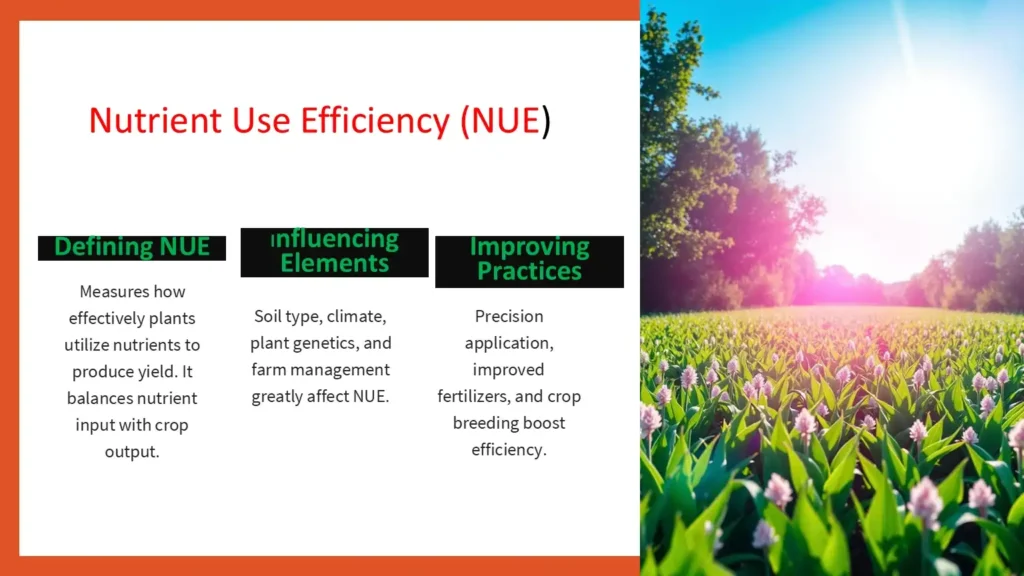
🌾5 Previous Year Questions (AFO, NABARD)
1. Which of the following is not a function of Nitrogen in plants? (IBPS AFO Mains 2022)
A. Promotes vegetative growth
B. Increases leaf size and color
C. Helps in chlorophyll synthesis
D. Increases root elongation
📝 Additional Information
A. Promotes vegetative growth: Nitrogen is a key component of amino acids and proteins, which help in shoot and leaf development.
B. Increases leaf size and color: Nitrogen makes leaves larger and greener by increasing chlorophyll content.
C. Helps in chlorophyll synthesis: It is directly involved in chlorophyll production, which is essential for photosynthesis.
D. Increases root elongation: Incorrect. Phosphorus, not nitrogen, is the major nutrient responsible for root development.
2. Which fertilizer contains all three primary nutrients – N, P, and K? (NABARD Grade A 2021)
A. Urea
B. DAP
C. NPK (12:32:16)
D. SSP
📝 Additional Information
A. Urea: Only contains nitrogen (46% N).
B. DAP (Di-Ammonium Phosphate): Contains nitrogen and phosphorus only.
C. NPK (12:32:16): It’s a complete fertiliser with 12% N, 32% P₂O₅, and 16% K₂O.
D. SSP (Single Super Phosphate): Contains phosphorus and a bit of sulfur, no N or K.
3. Which among the following is a biofertilizer? (ICAR JRF 2020)
A. Rock Phosphate
B. Azotobacter
C. Ammonium Nitrate
D. Potash
📝 Additional Information
A. Rock Phosphate: A mineral source of phosphorus, not a biofertilizer.
B. Azotobacter: A free-living nitrogen-fixing bacteria — a true biofertilizer.
C. Ammonium Nitrate: Inorganic nitrogen fertilizer.
D. Potash: Refers to potassium-based chemical fertilizers.
4. Which of the following is a characteristic of green manures? (FCI AG III 2019)
A. They are applied in liquid form
B. They are industrial fertilizers
C. They are fast-growing leguminous crops grown and plowed under
D. They are always perennial crops
📝 Additional Information
A. Applied in liquid form: This refers to foliar sprays or fertigation, not green manures.
B. Industrial fertilizers: Green manures are natural, not industrial.
C. Leguminous crops plowed under: True. Green manures like Sunnhemp are plowed into soil to enrich it with organic matter and nitrogen.
D. Always perennial: Most green manure crops are annuals, not perennials.
5. Which nutrient is absorbed by plants in the form of H₂PO₄⁻ and HPO₄²⁻? (IBPS AFO Mains 2023)
A. Potassium
B. Calcium
C. Phosphorus
D. Nitrogen
📝 Additional Information
A. Potassium: Absorbed as K⁺ ion.
B. Calcium: Absorbed as Ca²⁺.
C. Phosphorus: Plants absorb it as dihydrogen phosphate (H₂PO₄⁻) and hydrogen phosphate (HPO₄²⁻) depending on soil pH.
D. Nitrogen: Taken up mainly as NO₃⁻ (nitrate) or NH₄⁺ (ammonium).
Students also ask section
There are 17 essential nutrients required for plant growth, including carbon, hydrogen, oxygen (from air and water), and 14 others obtained from the soil.
Macronutrients are required in large amounts (e.g., N, P, K, Ca, Mg, S), whereas micronutrients are needed in very small quantities (e.g., Zn, Fe, Cu, Mn, B, Mo, Cl, Ni).
This law states that plant growth is limited by the nutrient that is in the shortest supply, even if all other nutrients are abundant. This highlights the importance of balanced nutrient supply.
Nutrients are absorbed through plant roots in either active (energy-dependent) or passive (along concentration gradient) modes, mainly in ionic forms.
Organic manures improve long-term soil health and provide micronutrients, while chemical fertilizers provide quick nutrient availability. Both should be balanced under INM for best results.
🧾 Conclusion: Essential Plant Nutrients PPT
In the journey of growing healthy crops and achieving better yields, understanding essential plant nutrients is not just a chapter—it’s the foundation. Whether you are a BSc Agriculture student or preparing for competitive exams like NABARD, AFO, or JRF, mastering this topic will give you a strong advantage both in theory and in the field.
Through this Essential Plant Nutrients PPT, we’ve tried to simplify complex terms, present them visually, and make your learning journey easier and more practical. Our aim is not just to help you pass exams—but to make you a smarter, more confident agri-professional.
🌱 So, are you ready to strengthen your basics and grow your knowledge?
📘 Explore the full Fundamentals of Agronomy series on our website—each part designed with visuals, explanations, and real exam questions.
📩 Need this PPT for personal use? Message me on WhatsApp, and I’ll send it to you directly.
📢 Don’t forget to share this with your batchmates and agri-friends—let’s grow together!
👉 Click here to go to the main Agronomy Page, where you’ll get all parts, notes, and PYQs in one place.
Stay consistent, keep revising, and grow with AgriGramodaya — your trusted guide for agriculture learning.
Click to Join Our Free WhatsApp Group for Agriculture Updates!
Get daily updates, free study material, and the latest schemes, and connect with other agriculture students and farmers.
Read more fundamentals of agronomy Topics
After bsc agriculture exam New Syllabus
Latest Syllabus | Download Here |
IBPS Agriculture Filed Officer | |
NABARD GRADE A | |
Food Corporation of India (FCI) | |
RAEO | |
RHEO | |
Food Inspector | |
IFFCO AGT | |
MP PAT | |
UPSSSC AGTA |
Read B.Sc. agriculture syllabus and notes
Important message for ppt
📥 Want This PPT for Personal Use?
If you want this full presentation in PPT format for offline study or classroom use, feel free to message me personally on WhatsApp.
I’ll be happy to share it with you!
📲 WhatsApp 9343512089
📝 Note: This is for educational purposes only. Please don’t redistribute without permission
Latest post
Fundamentals of Genetics by B.D. Singh Book PDF: A Comprehensive Review & Why It’s a Must-Have for Agri Students
Let’s be honest for a second—when most of us join...
Read MoreThe Ultimate ICAR JRF Horticulture Preparation Strategy (2026) & PYQ Analysis (2024-25)
Table of Contents Are you overwhelmed by the vast syllabus...
Read MoreBest Books for ICAR JRF Horticulture 2026: The Topper’s Booklist (Updated)
Table of Contents Are you still dreaming of IARI relying...
Read MoreBest Books for ICAR JRF Plant Science 2026: The Ultimate Booklist (Updated)
Table of Contents Are you still planning to crack JRF...
Read More🙋♂️ About the Author
Khumesh, a BSc Agriculture student and founder of AgriGramodaya.com, is on a mission to make “Fundamentals of Agronomy” the easiest and most accessible subject for students across India.
Having personally faced the challenge of finding clear, structured, and visual content for Agronomy, he decided to build a complete one-page resource, breaking down the full syllabus into simple parts — supported by PPTs, summary notes, previous-year MCQs, and exam-oriented insights.
Every part of this subject is designed to help students from zero to advanced level, whether you’re preparing for semester exams or agriculture job exams.
📚 Learn visually. Revise smartly. Succeed confidently — only on AgriGramodaya.


